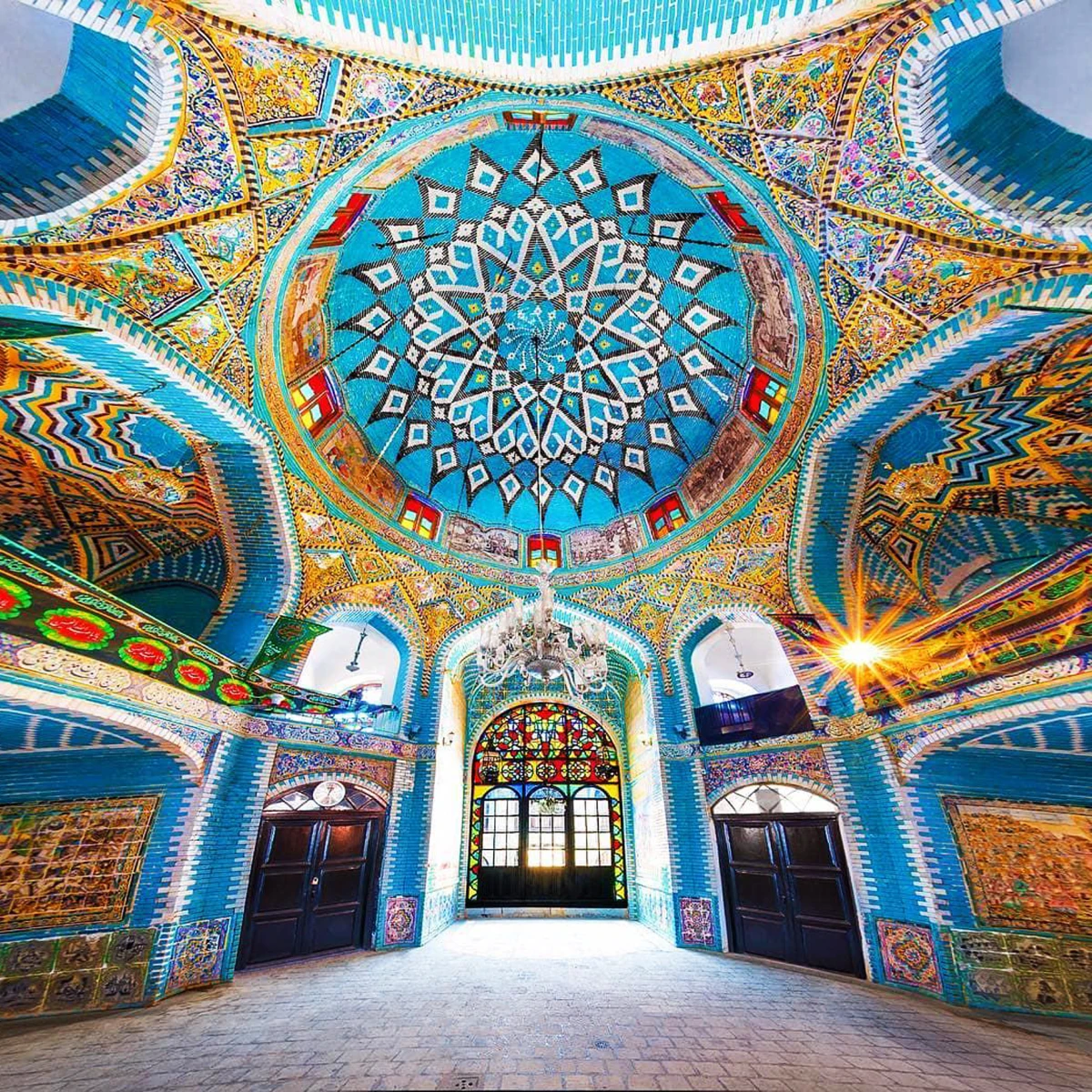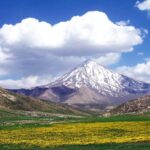Moaven al-Molk Tekyeh is a stunning historical and cultural complex located in the heart of Kermanshah, a city in western Iran. The complex boasts exquisite architecture, intricate tilework, and a unique blend of Persian and European styles. Moaven al-Molk Tekyeh is not only a significant religious site but also an architectural masterpiece that showcases the artistic and cultural achievements of the Qajar era.
History and significance
Moaven al-Molk Tekyeh was built in the early 20th century by Mohammad Hossein Khan Moaven al-Molk, a prominent Qajar-era governor of Kermanshah. The complex was intended as a place for Shia Muslims to gather and participate in religious ceremonies.
The complex features a unique blend of Persian and European architectural styles, with elements such as stained-glass windows and ornate tilework decorating the façade. The complex has since become a significant cultural and historical site in Kermanshah and is considered a jewel of the city’s architectural heritage.
Features and attractions
Moaven al-Molk Tekyeh is home to several impressive features and attractions that make it a must-visit destination for tourists and cultural enthusiasts. The main features of the complex include:
The Tekyeh building
The Tekyeh building, which is the main structure of the complex and features a stunning façade adorned with intricate tilework, calligraphy, and colorful stained-glass windows. The building has several prayer halls and is used for various religious ceremonies, including mourning rituals during the month of Muharram.
The Hosseinieh building
The Hosseinieh building is a smaller structure located next to the Tekyeh and is used for religious gatherings and lectures. The building features beautiful tilework and a peaceful courtyard, making it a perfect place to relax and reflect.
The Museum of Anthropology
The Museum of Anthropology, which is located within the complex and houses a collection of artifacts related to the history and culture of Kermanshah. The museum features exhibits on traditional crafts, clothing, and musical instruments, as well as a collection of rare manuscripts and documents.
Abbasieh and Zeinabieh
Abbasieh and Zeinabieh, which are two smaller structures located within the complex serve as prayer halls and are named after important figures in Shia Islam. Abbasieh is named after Abbas ibn Ali, the half-brother of Imam Hussain, and Zeinabieh is named after Zeinab bint Ali, the daughter of Imam Ali. Both buildings feature beautiful tilework and are used for religious ceremonies and gatherings.
Last word
Moaven al-Molk Tekyeh is a must-visit destination for anyone interested in exploring Iran’s rich history and cultural heritage. This stunning complex offers visitors a glimpse into the Qajar-era architecture and provides a unique opportunity to participate in Shia Muslim religious ceremonies. So, if you’re planning a trip to Iran, make sure to add Moaven al-Molk Tekyeh to your itinerary, and get ready to explore one of Kermanshah’s most fascinating cultural and historical sites.
Take part in our guided tours to Moaven al-Molk Tekyeh, providing you a nice visit with a deeper understanding of this tekyeh’s history and architecture.
Let us know your ideas and comments about this article in the comment box below, we will be happy to hear from you!


















